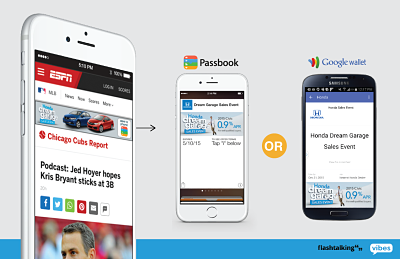Customer retention is one of the most manageable ways to increase a business’s revenue over time. Statistics show that customer acquisition can cost car dealerships between 6-10 times more than customer retention. While existing customers are 60-70% more likely to make a purchase, just 5-20% of people will become new customers. It’s more difficult to organically find new customers than it is to ensure the return of current customers. In fact, companies that improve customer retention rates by just 10% will improve their overall business value by 30%.
The task of building loyalty can’t be achieved overnight, but mobile app technology is here to help. With almost 90% of consumer smartphone time spent in a native mobile app, mobile remains the most effective channel modern businesses can use to stay connected to existing customers. One of the most effective ways car dealerships can improve customer retention is through the use of a branded app – an experience the customer takes with them as they purchase a car and leave the car dealership.
Retention Through Mobile Loyalty Programs

Dealer apps can increase both revenue and retention by designing offers that can be saved in a user’s mobile wallet to be redeemed on their next service visit. In early 2015, Honda launched a nationwide ad campaign entitled “Honda Dream Garage Sales Event,” and the brand used mobile wallets as a way for customers to tap banner ads and save the sales event on their Google or Apple Wallets. The ads ran on washingtontimes.com, Allrecipes.com and ESPN.com.
When the car buyer saved the content to their device, they automatically enabled Honda to send them updates and reminders on upcoming sales events, enhancing the brand’s two-way communication with its customers. The mobile wallet served as a constant reminder to the mobile user to visit a dealership. Through this campaign, mobile wallets generated more brand awareness for the OEM and dealerships than traditional advertising while also tracking measurable traffic.
Retention Through Follow-Ups
Eighty-seven percent of customers tend to forget about a salesperson as soon as they leave a showroom, even if they have made a purchase. To remain top-of-mind with new and existing customers, brands must maintain a steady drip of communication with those customers. Companies that leverage a multi-channel customer engagement strategy experience 89% customer retention as compared to only 33% retention for businesses that don’t use multiple touch points.
Dealer-branded mobile apps integrated with CRM tools can help sales teams effectively manage reminders and create follow-up campaigns from a simple dashboard on their device. Sales teams can simply access the app to set up a campaign that will send automated messages to be delivered to potential buyers, or even existing clients. Furthermore, these communication campaigns can be delivered in whatever form the customer prefers – in-app notifications, text messaging, email and voicemail.
Related: Learn how management can empower these sales teams for the mobile experience.
Retention Through Engagement
Dealer-branded apps are handy to any customer by providing a range of convenient auto ownership tools to keep customers engaged. These features include: a digital parking meter, flashlight, car location and so much more. In addition to these effective tools, apps can be customized in order to provide a menu of valuable services designed to facilitate engagement between dealership service centers and car buyers. For example, customers can turn to the app to access their car’s service history, pay an invoice, access an owner’s manual, request roadside assistance, receive a notification when their vehicle is ready, schedule a service repair and more. Studies show that dealerships experience a 25% increase for 6-month service visits after car buyers download a dealership’s mobile app. Although the sales generated by service, parts and repairs account for only 10-15% of a dealership’s gross profit, service profit margins are significantly higher than vehicle sales margins.
Conclusion
The disruptive nature of digitization has evolved the way business is done in traditional industries, especially in automotive. The need for innovation is driven by the many traditional challenges retail car dealers face. They are hardest hit by costs incurred and passed on by OEMs such as compliance to new fuel emission standards and fuel efficiency requirements, or even higher labor costs. These costs are passed along to the retailer who often doesn’t wish to pass those costs on to the car buyer. Dealerships also need to find ways to reduce costs due to high real estate expenses often addressed by a reduction in store space.
While these challenges aren’t unfamiliar or infeasible for a mobile app, finding ways to reduce costs and increase revenue in other areas of the business can help dealers address their bottom lines. Mobile offers dealerships a digital means of engaging with car buyers. The numbers are clear: mobile apps are no longer merely the new way of marketing for the automotive retail industry; it is a necessary business integration that has proven its effectiveness time and again. Dealerships that embrace digitization with a start-to-finish mobile strategy that engages customers at every stage of their buying journey and vehicle ownership lifecycle will gain the ultimate competitive edge.
 The SK Content Team
The SK Content Team